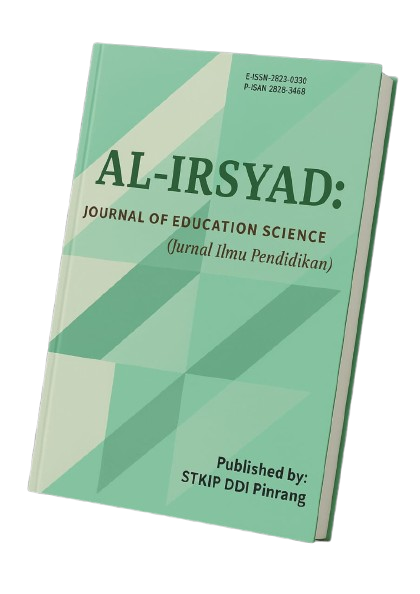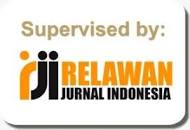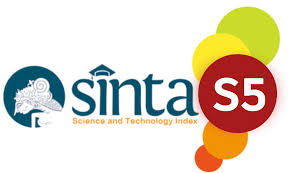DESIGN AND DEVELOPMENT OF AN E-MODULE FOR VOCABULARY LEARNING IN JUNIOR HIGH SCHOOLS
DOI:
https://doi.org/10.58917/aijes.v4i2.238Kata Kunci:
ADDIE Methodology, E-Module, Educational Technology, Junior High School, Vocabulary LearningAbstrak
This study examines the design, development, and effectiveness of "Easy Vocabulary," a web-based e-module aimed at improving English vocabulary skills among junior high school students at SMPN 1 Parepare, Indonesia. Addressing challenges like limited learning resources, traditional teaching methods, and lack of interactive media, the study applied the ADDIE model (Analysis, Design, Development, Implementation, Evaluation) and utilized a one-group pretest-posttest design involving 32 Grade VIII students (aged 13-14 years) selected through purposive sampling. The e-module features locally contextualized content, multimedia elements like barcode-integrated audio pronunciation, and web-based accessibility for independent learning. Expert validation from material experts, media specialists, teachers, and students yielded high validity scores: material expert (92.5%), media expert (81%), teacher (85.55%), and student responses (82.29%). Effectiveness was evident in the significant improvement in vocabulary mastery, with pretest scores of 57.75 increasing to 93.90 posttest, achieving an N-Gain score of 0.85, indicating high effectiveness. The study’s success is attributed to the combination of contextual design, interactive multimedia, and culturally relevant content, fostering student engagement. This research contributes valuable insights to the literature on educational technology, offering a replicable framework for enhancing vocabulary learning in Indonesian educational settings.
Referensi
Amalia, R., Ulin Nuha, M. A., & Nashoih, A. K. (2022). Development of Kosbarab Learning Media to Improve Arabic Vocabulary Mastery of Elementary Level Students Based on Android Construct 2. Al-Ta’rib : Jurnal Ilmiah Program Studi Pendidikan Bahasa Arab IAIN Palangka Raya, 10(2), 145–158. https://doi.org/10.23971/altarib.v10i2.4529
Anggriani, W., Ikhsanudin, I., & Rezeki, Y. S. (2023). Vocabee: Empowering Language Learning Through Descriptive Text - A Novel Approach to Vocabulary Instruction. Journal of English Education Program, 4(2), 98–115. https://doi.org/10.26418/jeep.v4i2.58194
Babazade, Y. (2024). The Impact of Digital Tools on Vocabulary Development in Second Language Learning. 1(1), 35–41.
Branch, R. M. (2009). Instructional Design: The ADDIE Approach. Springer US. https://books.google.co.id/books?id=mHSwJPE099EC
Braun, V., & Clarke, V. (2006). Using thematic analysis in psychology. Qualitative Research in Psychology, 3(2), 77–101. https://doi.org/10.1191/1478088706qp063oa
Cameron, L. (2001). Cambridge Language Teaching LIBRARY Group Dynamics in the Language Classroom by Zoltán Dörnyei and Tim Murphey Language Learning in Distance Education by Cynthia White Language Learning in Intercultural Perspective edited The Language Teaching Matrix Moti. Cambridge University Press, 14. www.cambridge.org
Candiasa, I. M. (2022). Application of Instructional Design Models by Prospective Teacher Students. Jurnal Pendidikan Dan Pengajaran, 55(3), 640–652. https://doi.org/10.23887/jpp.v55i3.54946
Cohen, S. L., Bikson, M., Badran, B. W., & George, M. S. (2022). A visual and narrative timeline of US FDA milestones for Transcranial Magnetic Stimulation (TMS) devices. Brain Stimulation, 15(1), 73–75. https://doi.org/10.1016/j.brs.2021.11.010
Creswell, J. W., & Creswell, J. D. (2022). Research Design: Qualitative, Quantitative, and Mixed Methods Approaches. SAGE Publications. https://books.google.co.id/books?id=Rkh4EAAAQBAJ
Davis, F. D. (1989). Perceived usefulness, perceived ease of use, and user acceptance of information technology. MIS Quarterly: Management Information Systems, 13(3), 319–339. https://doi.org/10.2307/249008
Gay, L. R., Mills, G. E., & Airasian, P. W. (2009). Educational research: Competencies for analysis and applications. Merrill/Pearson.
Hake, R. R. (1998). Interactive-engagement versus traditional methods: A six-thousand-student survey of mechanics test data for introductory physics courses. American Journal of Physics, 66(1), 64–74. https://doi.org/10.1119/1.18809
Keller, K. L., Parameswaran, M. G., & Jacob, I. (2010). Strategic Brand Management: Building, Measuring, and Managing Brand Equity. Pearson. https://books.google.co.id/books?id=cofhZbwwFuYC
Mayer, R. E. (2009). Multimedia Learning. Cambridge University Press. https://books.google.co.id/books?id=5g0AM1CHysgC
Mehrvarz ddk 2022. (2022). Media Pembelajaran Digital Teknologi. In Jurnal Pendidikan Anak (Vol. 8, Issue 1).
Muruganantham., G. (2015). Developing Of E-Content Package By Using ADDIE Model. International Journal of Applied Research, 1(3), 52, p 52–54. http://www.allresearchjournal.com/vol1issue3/PartB/pdf/67.1.pdf
Nambiar, R. M. K., Ibrahim, N., Hashim, R. S., Yasin, R. M., Azman, H., Yusof, N. M., Ramli, R., & Mustaffa, R. (2020). Impact of local culture-based reading materials on students’ skill development and confidence in english. Universal Journal of Educational Research, 8(2), 445–453. https://doi.org/10.13189/ujer.2020.080215
Nation, I. S. P. (2013). Learning vocabulary in another language. Learning Vocabulary in Another Language, 1–624. https://doi.org/10.1016/s0889-4906(02)00014-5
Schmitt, N., & Schmitt, D. (2020). Vocabulary in Language Teaching. Cambridge University Press. https://books.google.co.id/books?id=jILoDwAAQBAJ
Tessmer, M. (1993). Planning and Conducting Formative Evaluations: Improving the Quality of Education and Training. Kogan Page. https://books.google.co.id/books?id=eEsO-LvMS60C
Widiati, B., Monteoro, C. B., & Arbaiza, B. (2024). Enhancing Non English Students ’ Communication Skills through Blended Learning : A Lesson from English for Specific Purposes Lens. 4(4), 895–907.
Zulfahrin, L. U., Wardani, S., Hijau Bumi Tridharma, K., & Tenggara, S. (2019). The Development of Chemical E-Module Based on Problem of Learning to Improve The Concept of Student Understanding Article Info. Innovative Journal of Curriculum and Educational Technology, 8(2), 59–66. https://journal.unnes.ac.id/sju/index.php/ujet/article/view/31340
Unduhan
Diterbitkan
Cara Mengutip
Terbitan
Bagian
Lisensi
Hak Cipta (c) 2025 Syahrianita Syahrianita , Kalsum Kalsum

Artikel ini berlisensi Creative Commons Attribution 4.0 International License.























